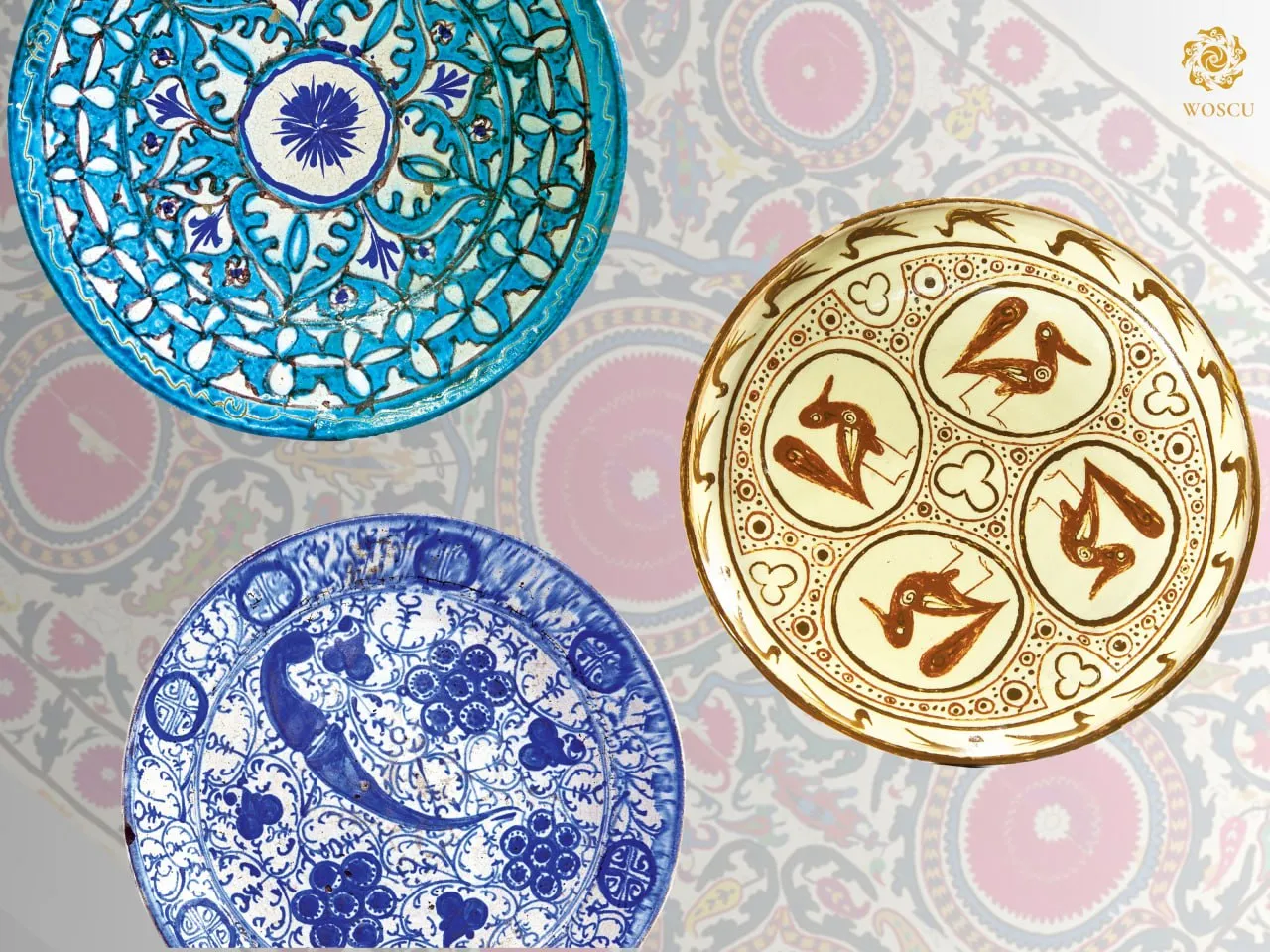
During the period of the Uzbek khanates, there were three schools of this craft: northeastern (Fergana), Bukhara-Samarkand and southwestern (Khorezmian). With a certain degree of similarity, each of them differed in some specific local features. Thus, the ceramics of the Fergana Valley and Khorezm were dominated by a medium blue colour, and alkaline (ishkori) glazing was used. Bukhara-Samarkand centres are known, in turn, for ceramics in a yellow-brown range, covered mainly with lead glaze.
In the late 19th and 20th centuries in the villages of Uba near Bukhara and Kasbi (Qashqadaryo), the tradition of making clay penny whistles was also developed. The Rishtan pottery centre dominated this art. In the exposition of the State Museum of Arts, there are several Rishtan works from the end of the 19th century, with elegant painting. The most common motifs in Rishtan ceramics are chorbarg (quatrefoil), anorgul (pomegranate flowers and fruit), bodomgul (stylized almond blossom), barg (leaf), and islimi (plant shoots). These images are frequently introduced in ornamentation – from choydishes, jugs and musical instruments to guns and knives. So, a typical example of these works is several Rishtan lyagans from the collection of the Museum, where there is a picture of a choydish in the centre surrounded by flexible branches. Another famous centre of the Fergana school of ceramics is Gurumsaray, where the famous masters T. Shermatov, H. Satimov, M. Rakhimov, M. Turapov and others worked.

The Gurumsaray ceramics are distinguished by the more archaic character of the painting. The main motifs are a jug, quatrefoil, a large cross-shaped pattern, and star-shaped figures. The Museum exposition also presents examples of ceramics from Ura-Tyube and Kokand. Stylized plant motifs prevailed in the decor of the Gijduvan pottery. The products of the masters of Shahrisabz differed in the abstract design and rich warm palette. The ceramics of Khorezm are known for patterns originating from architectural coverings. Only in this centre did they produce badia – dishes with vertically raised sides.
In Tashkent, the production of ceramics was concentrated in the Kukcha district, where the mahalla (quarter) of the Kulolgaron ceramists was located. Local masters created glazed products under the influence of potters of both the Fergana and Bukhara-Samarkand schools. In the middle of the 20th century, the famous Tashkent master M. Rakhimov, who knew the ancient technologies and painting techniques perfectly, begins a unique artistic experiment, referring to the pottery traditions of different eras and schools.
You can learn more about this topic in the book-album “The Collection of the State Museum of Arts of Uzbekistan” (Volume XIII) from the series “Cultural legacy of Uzbekistan in the world collections”.
The general sponsor of the project is the oilfield services company Eriell-Group.
